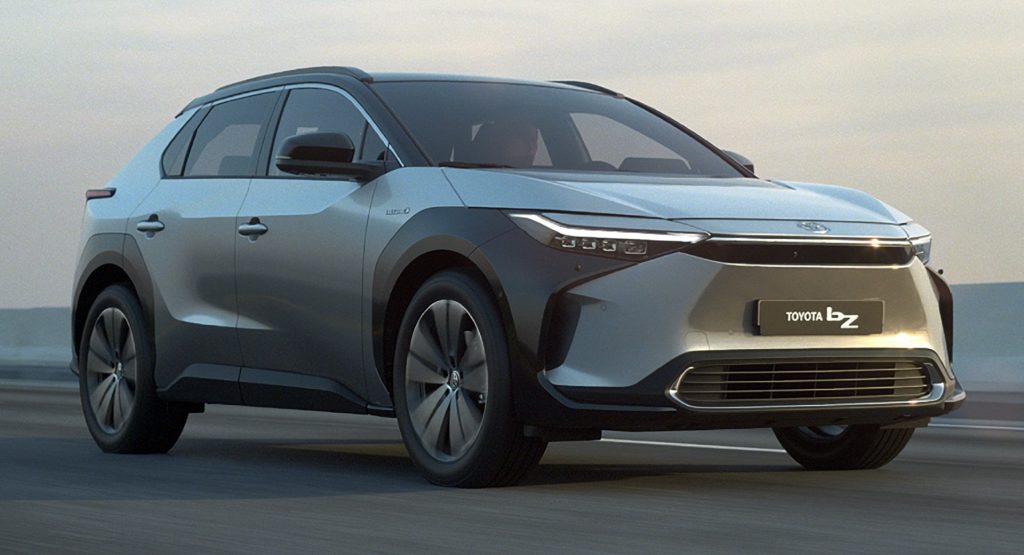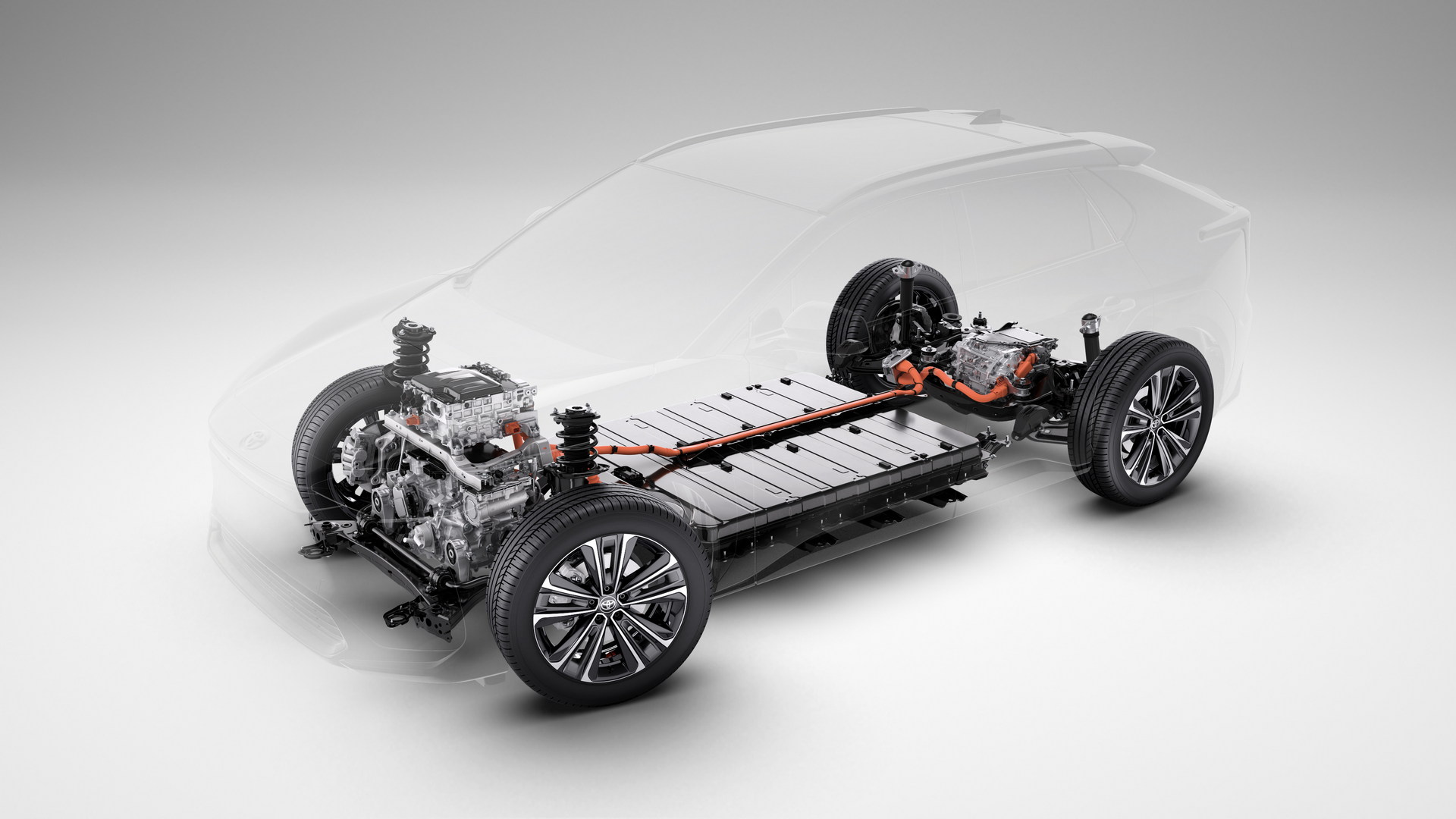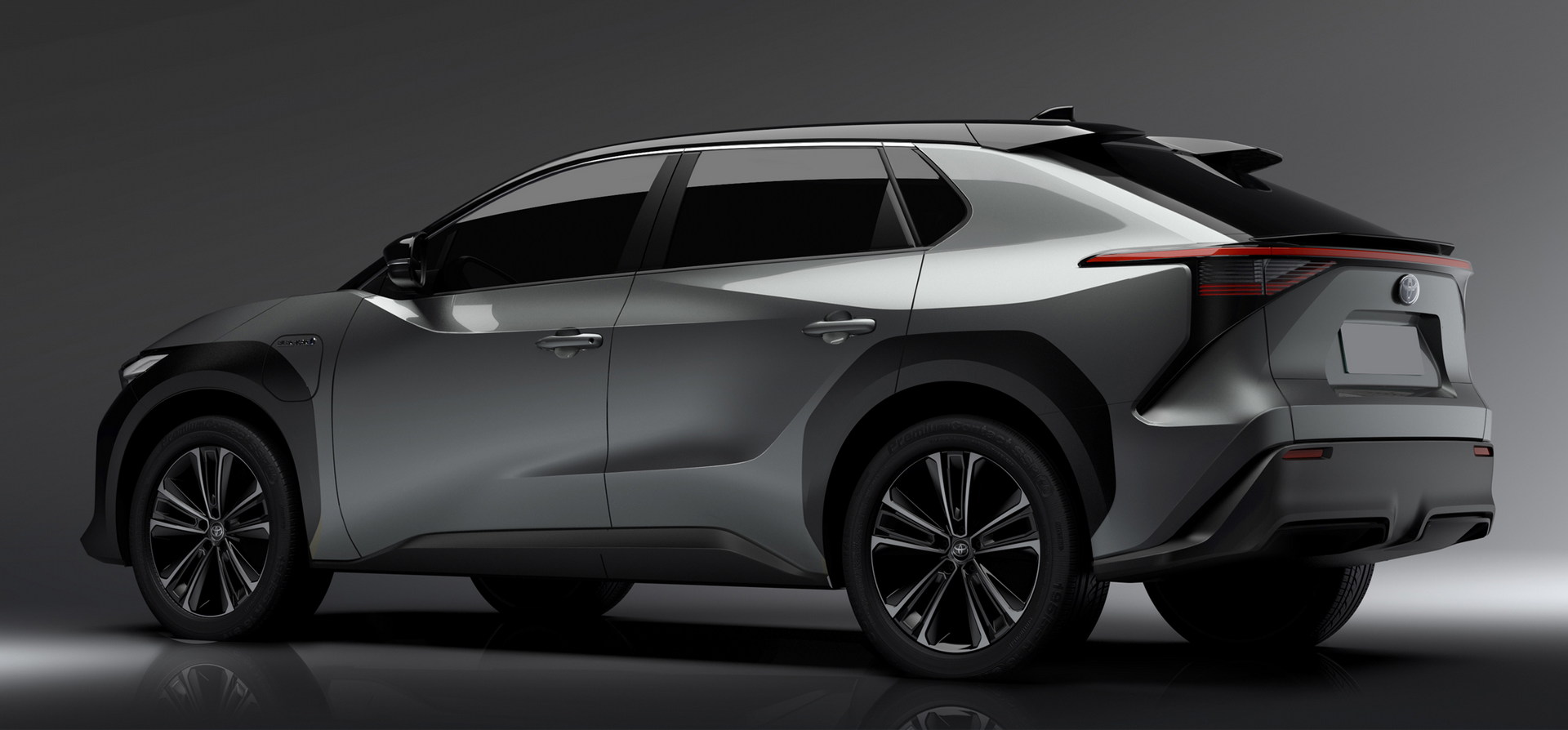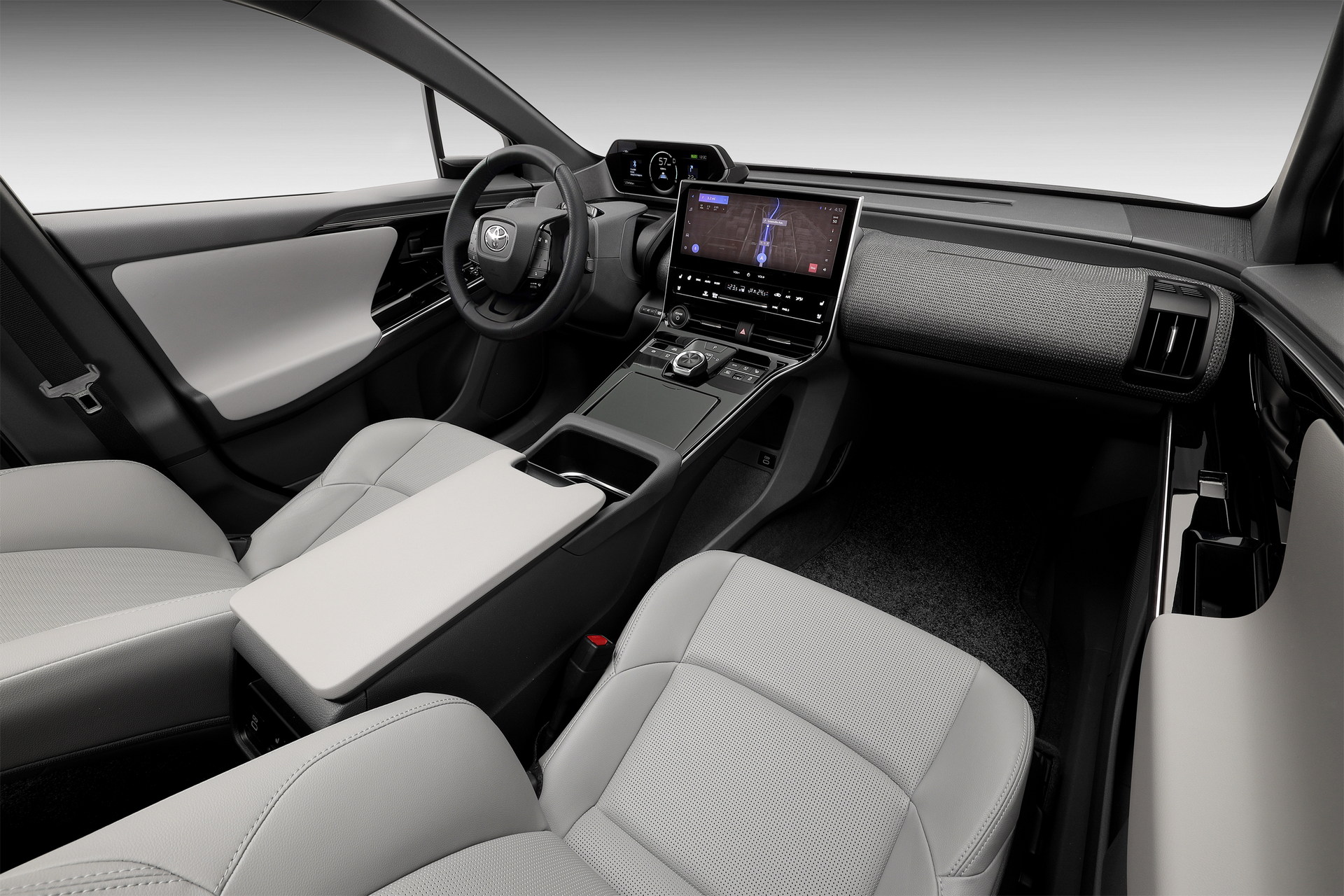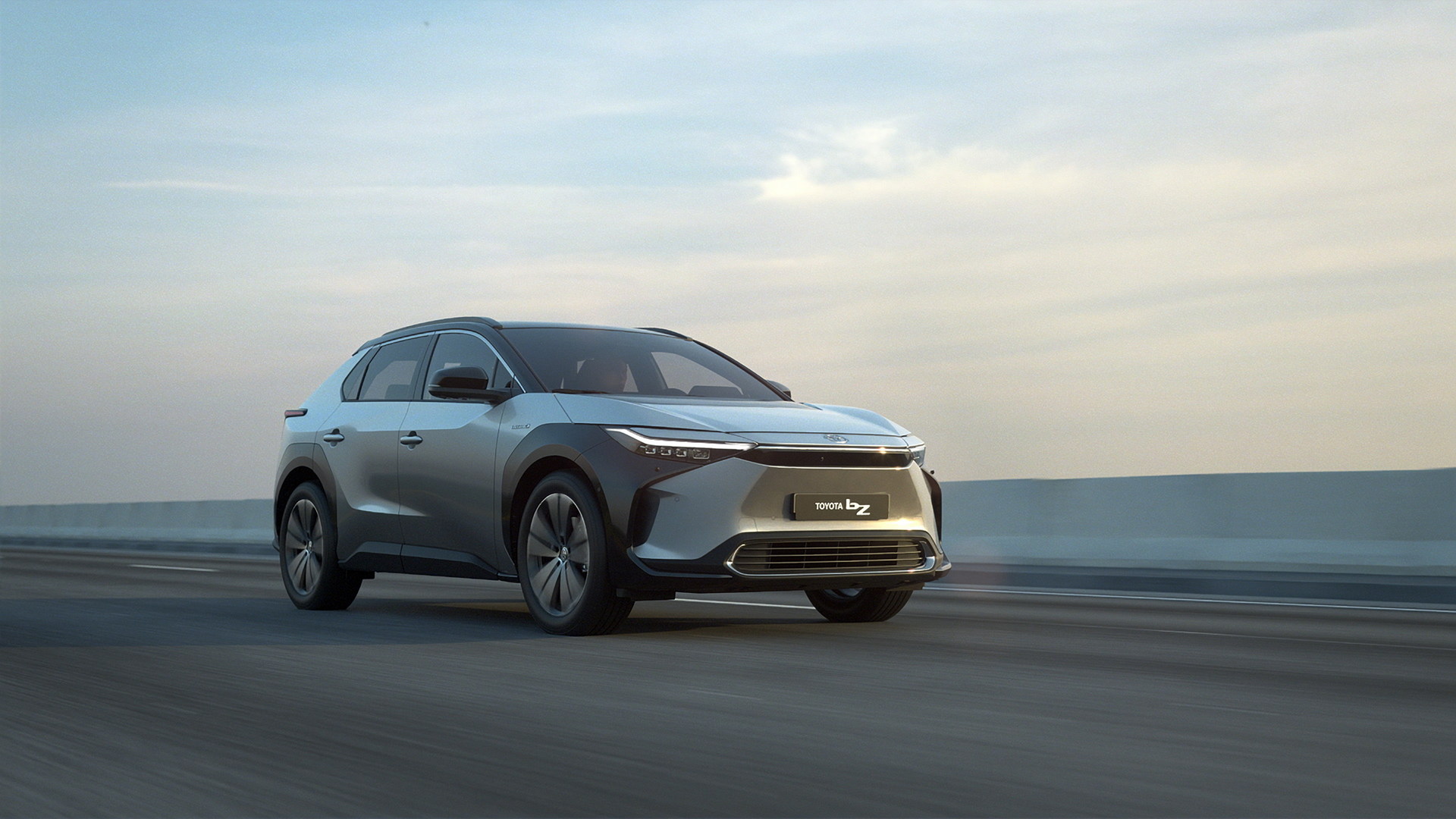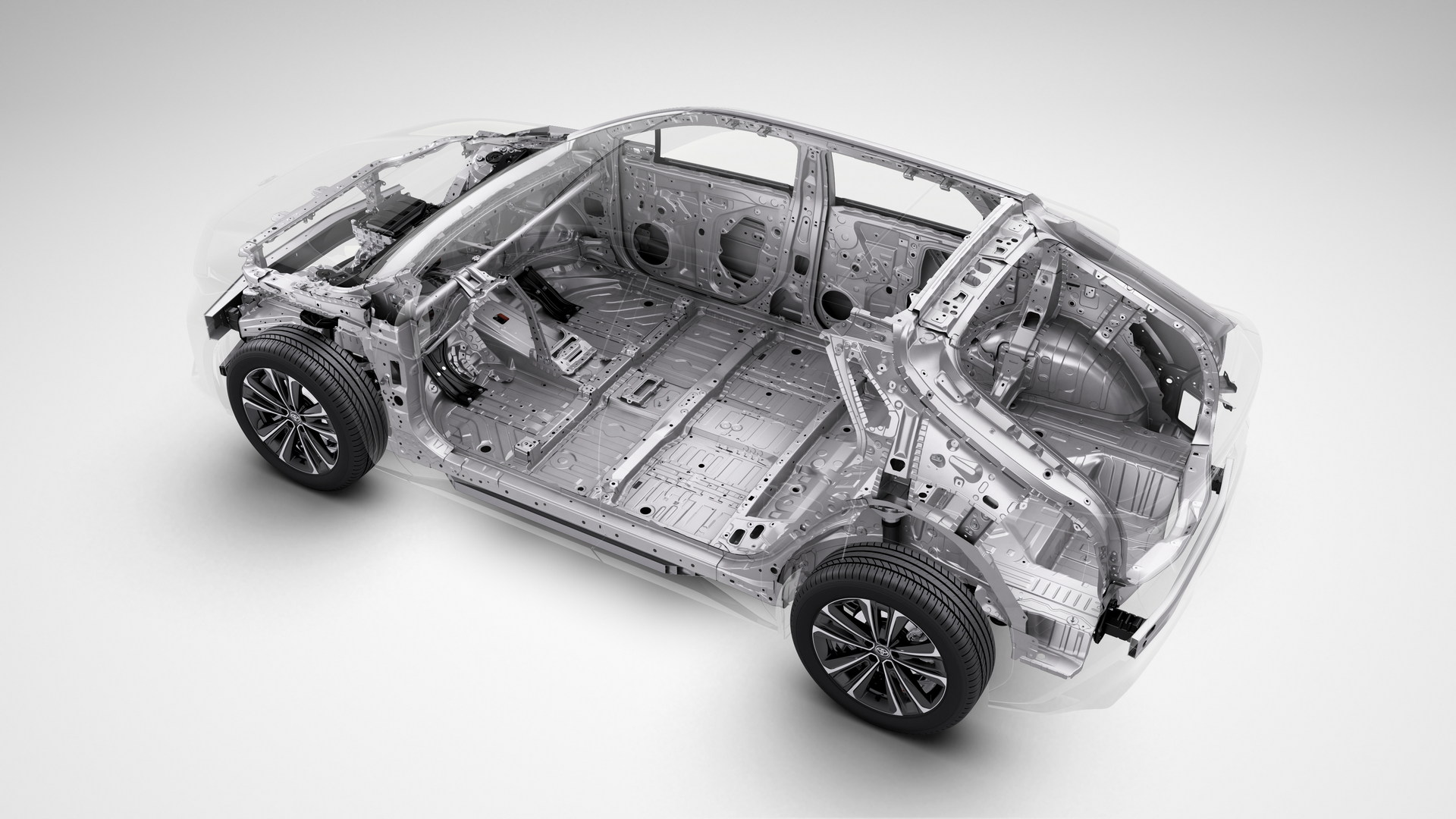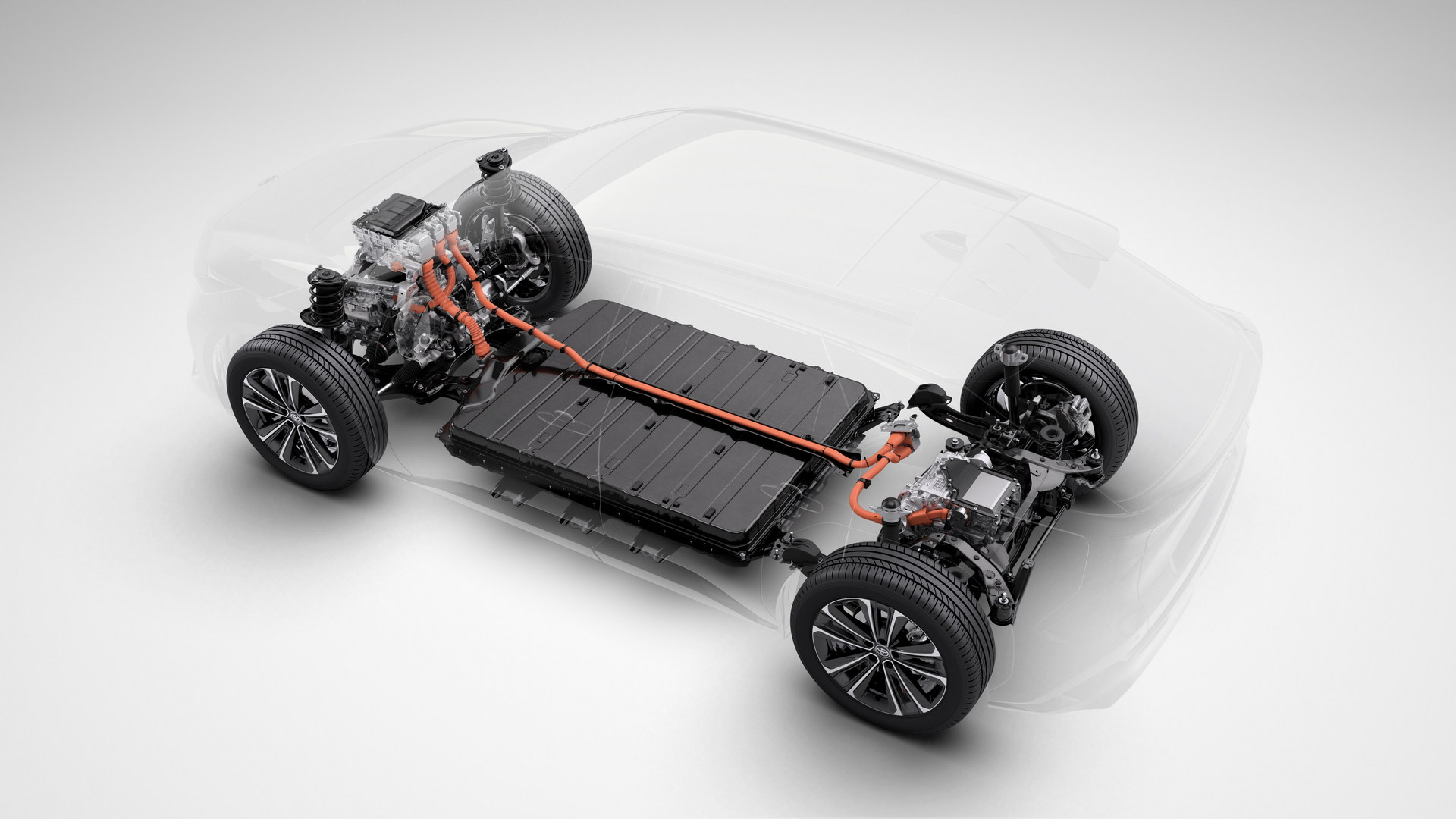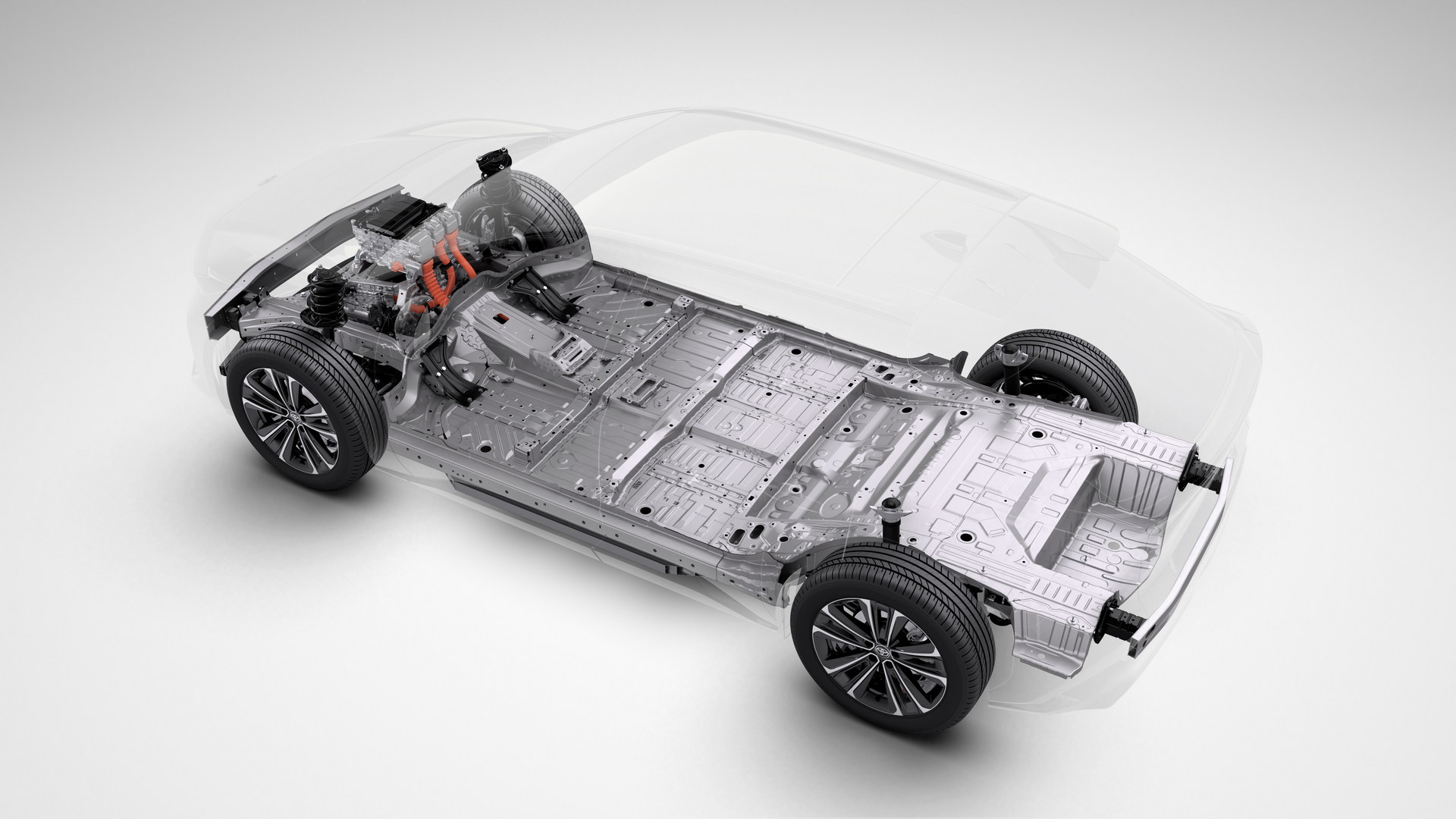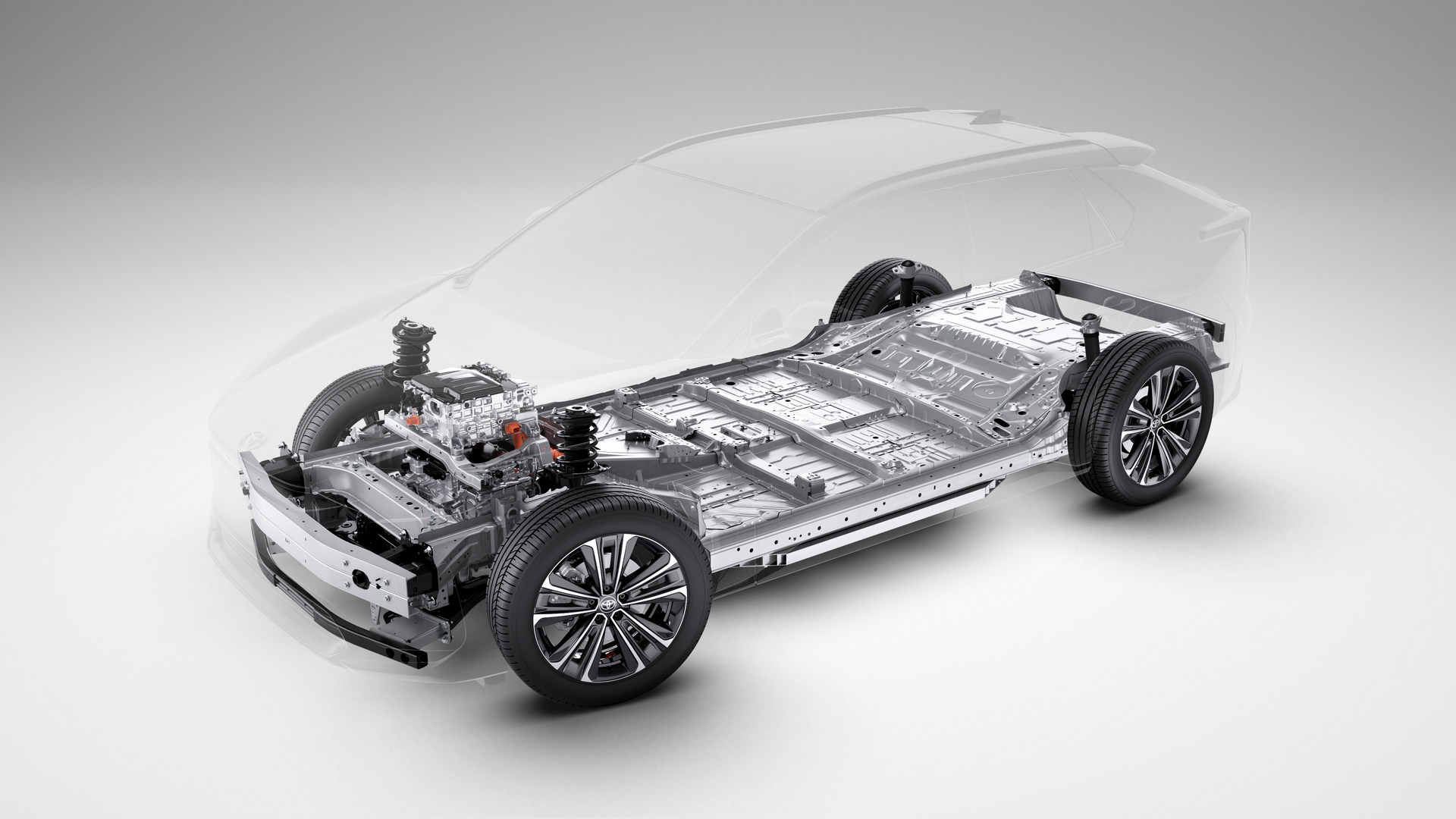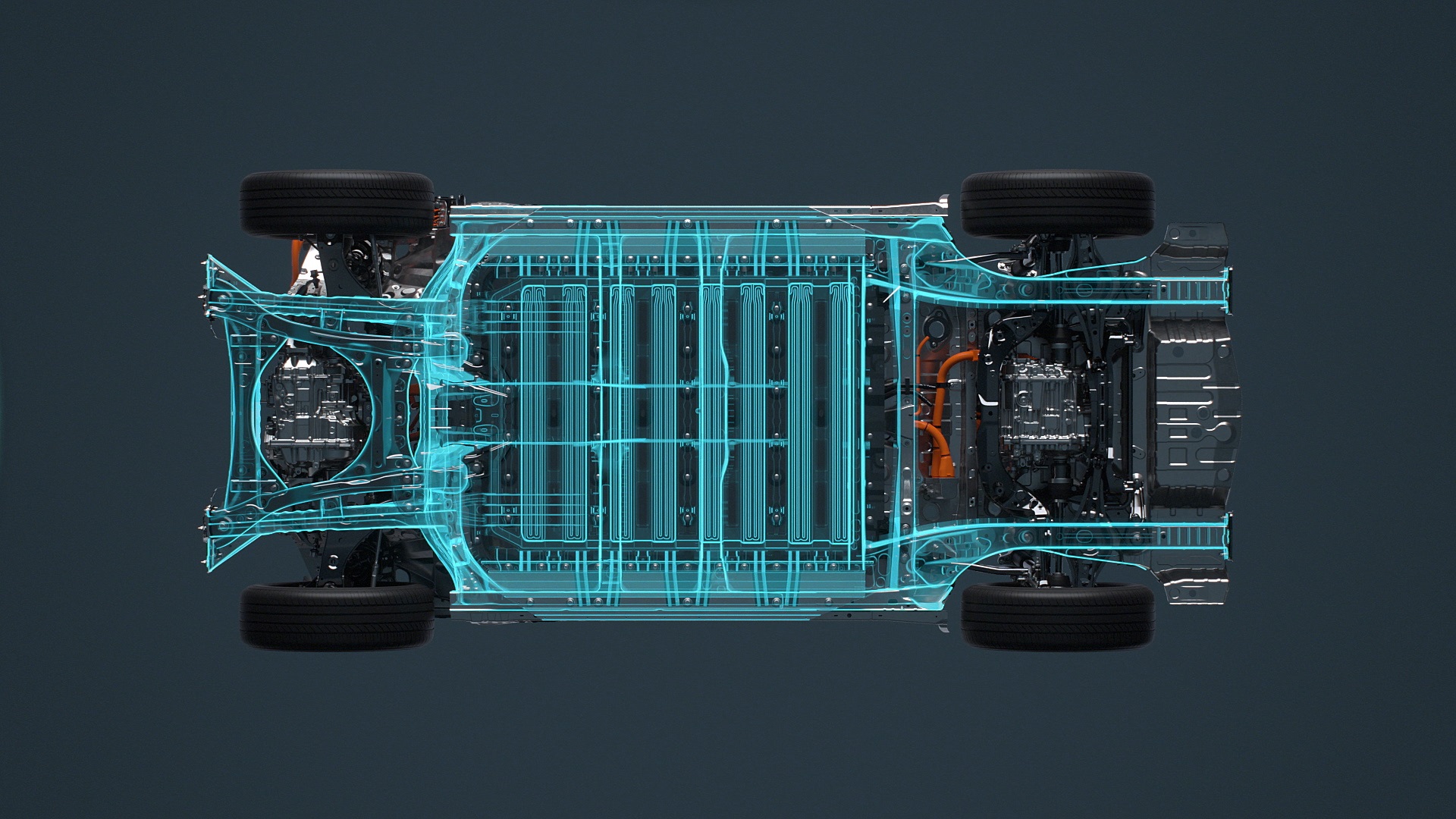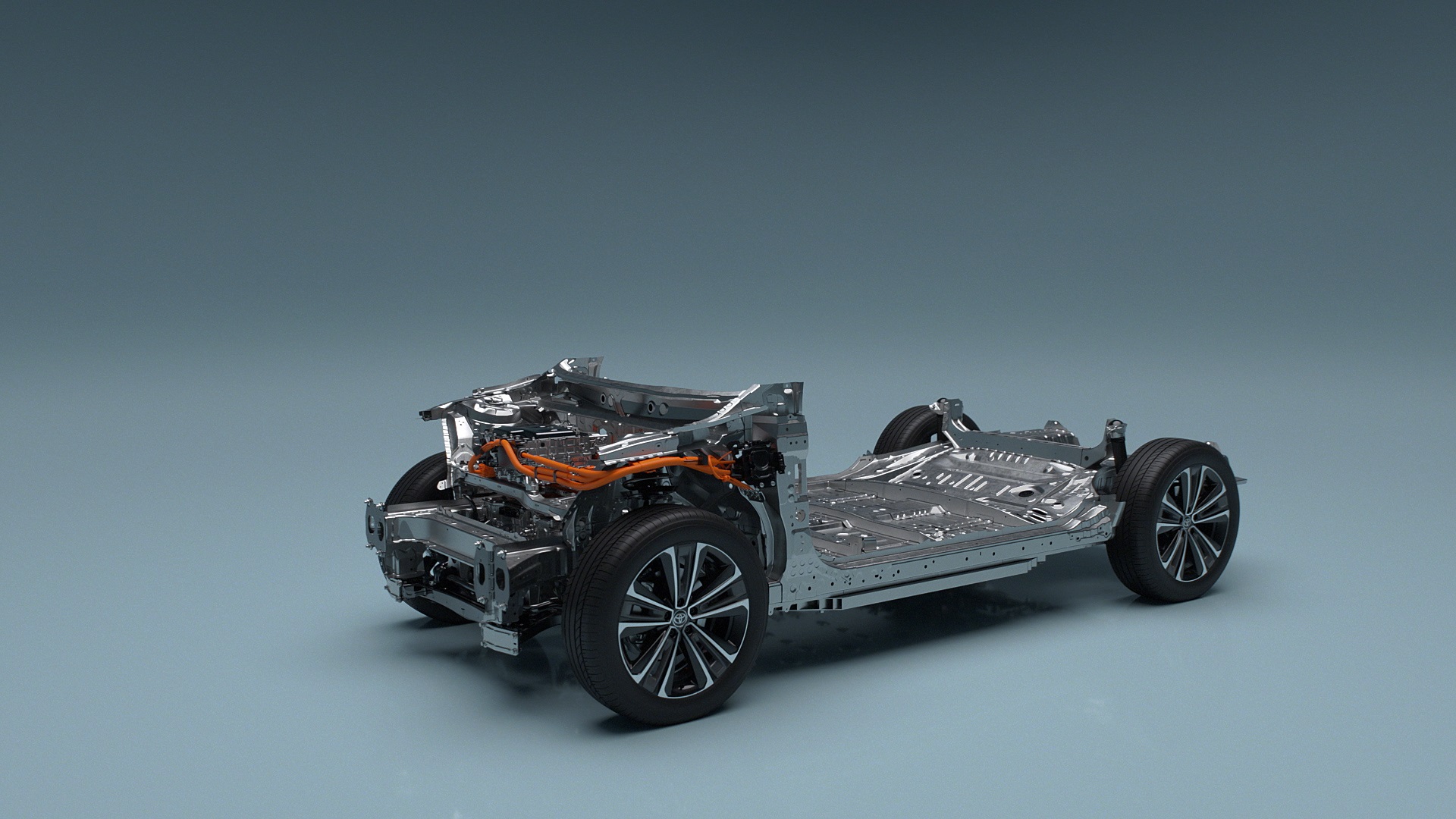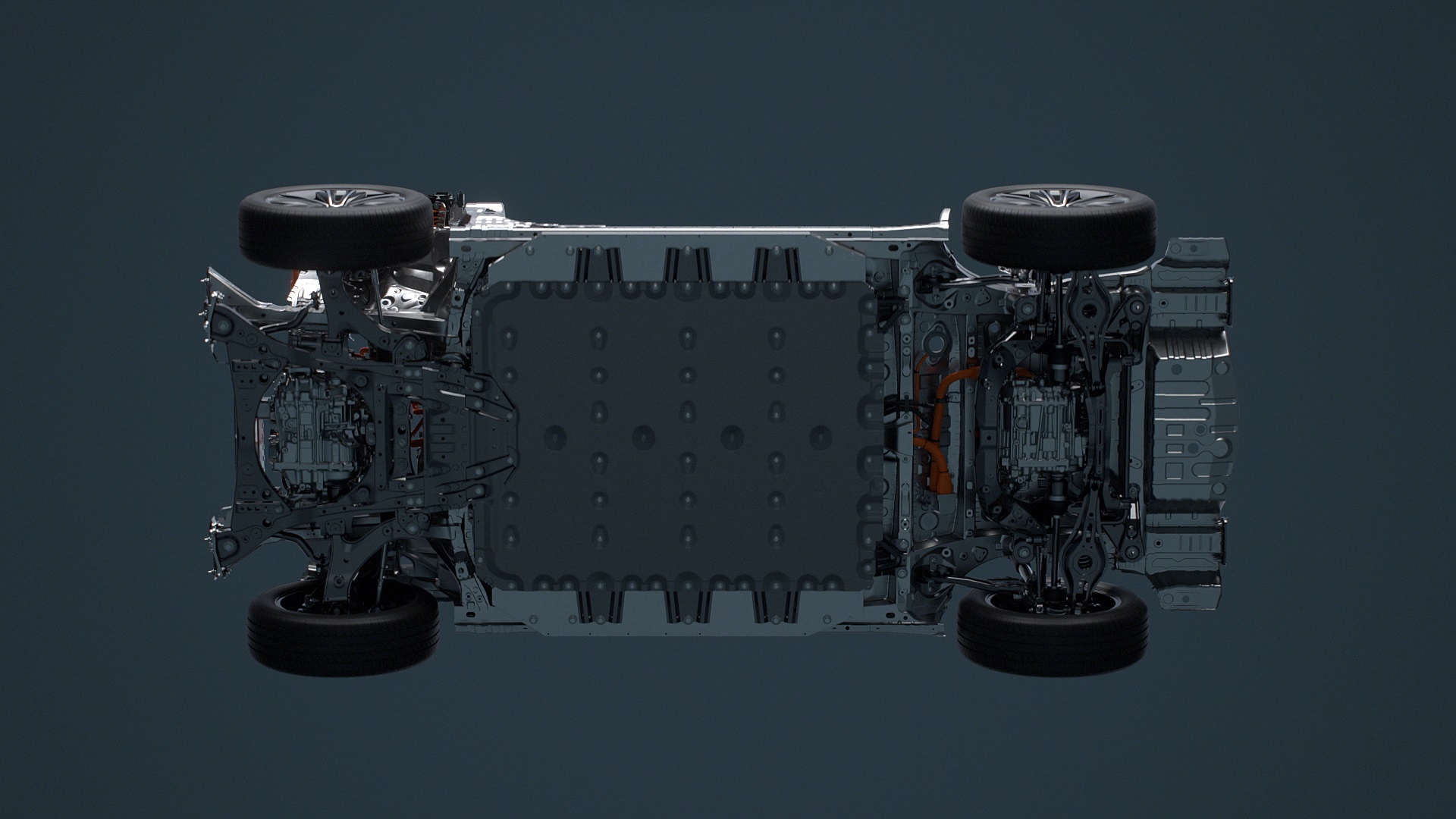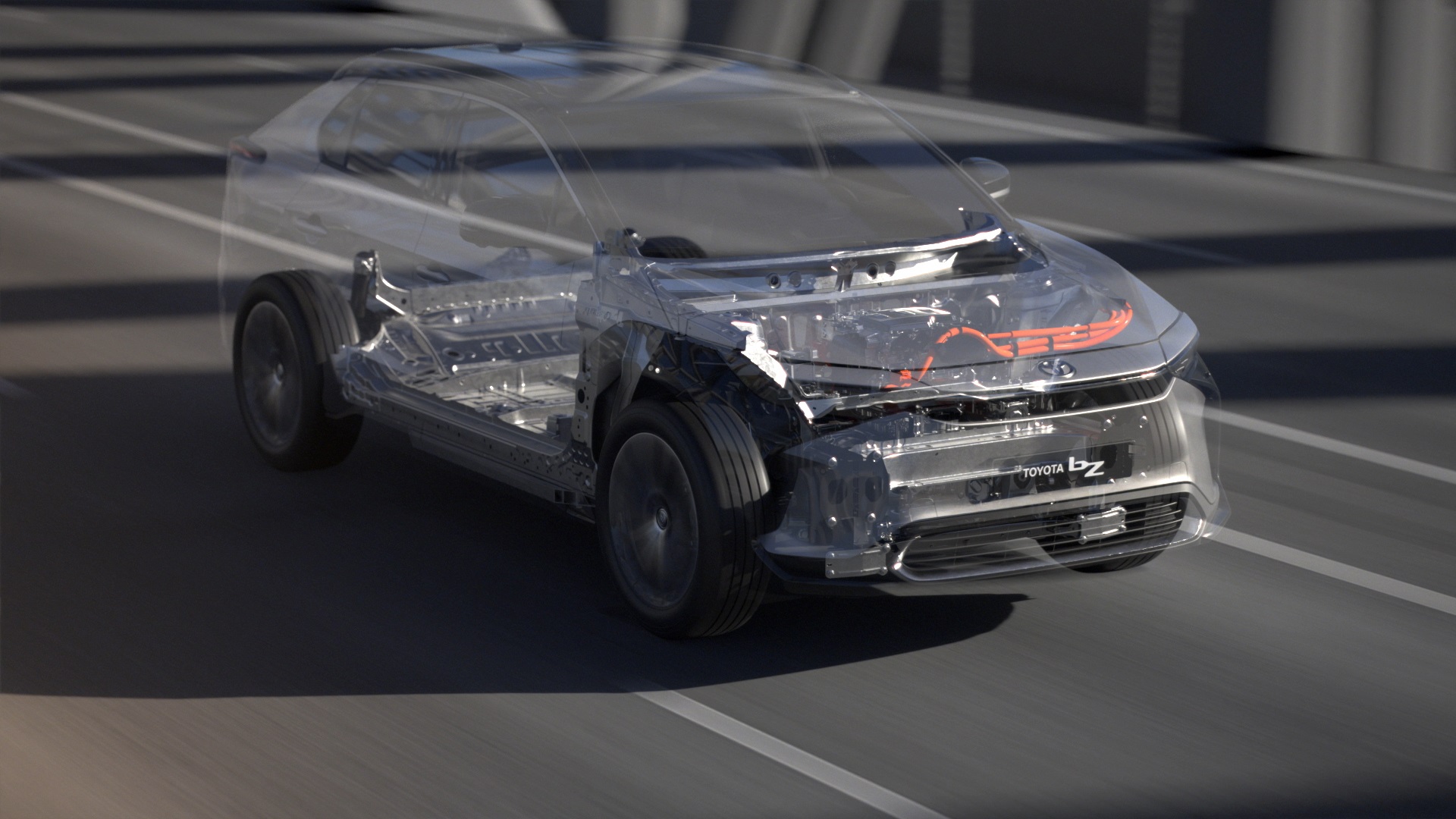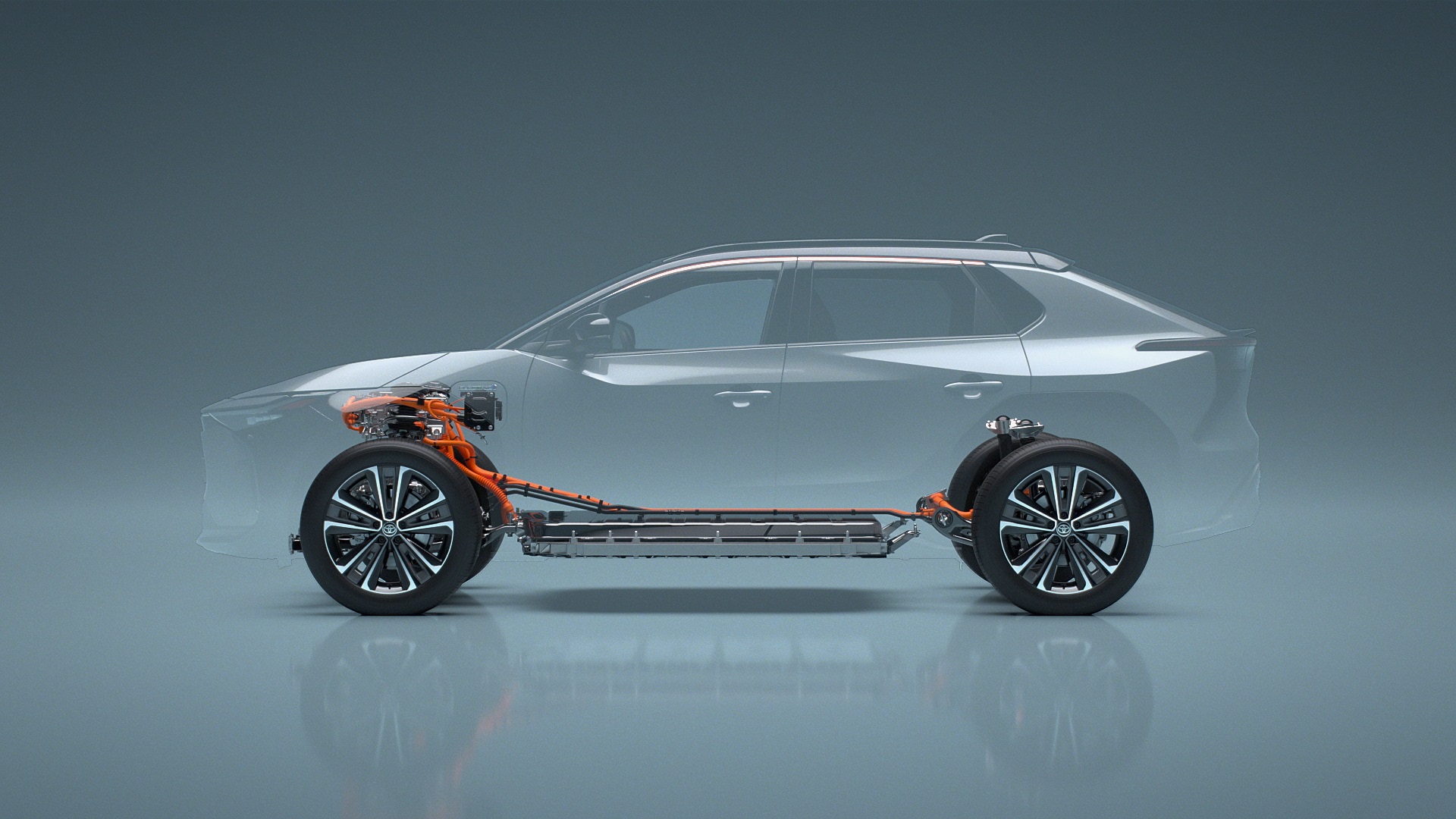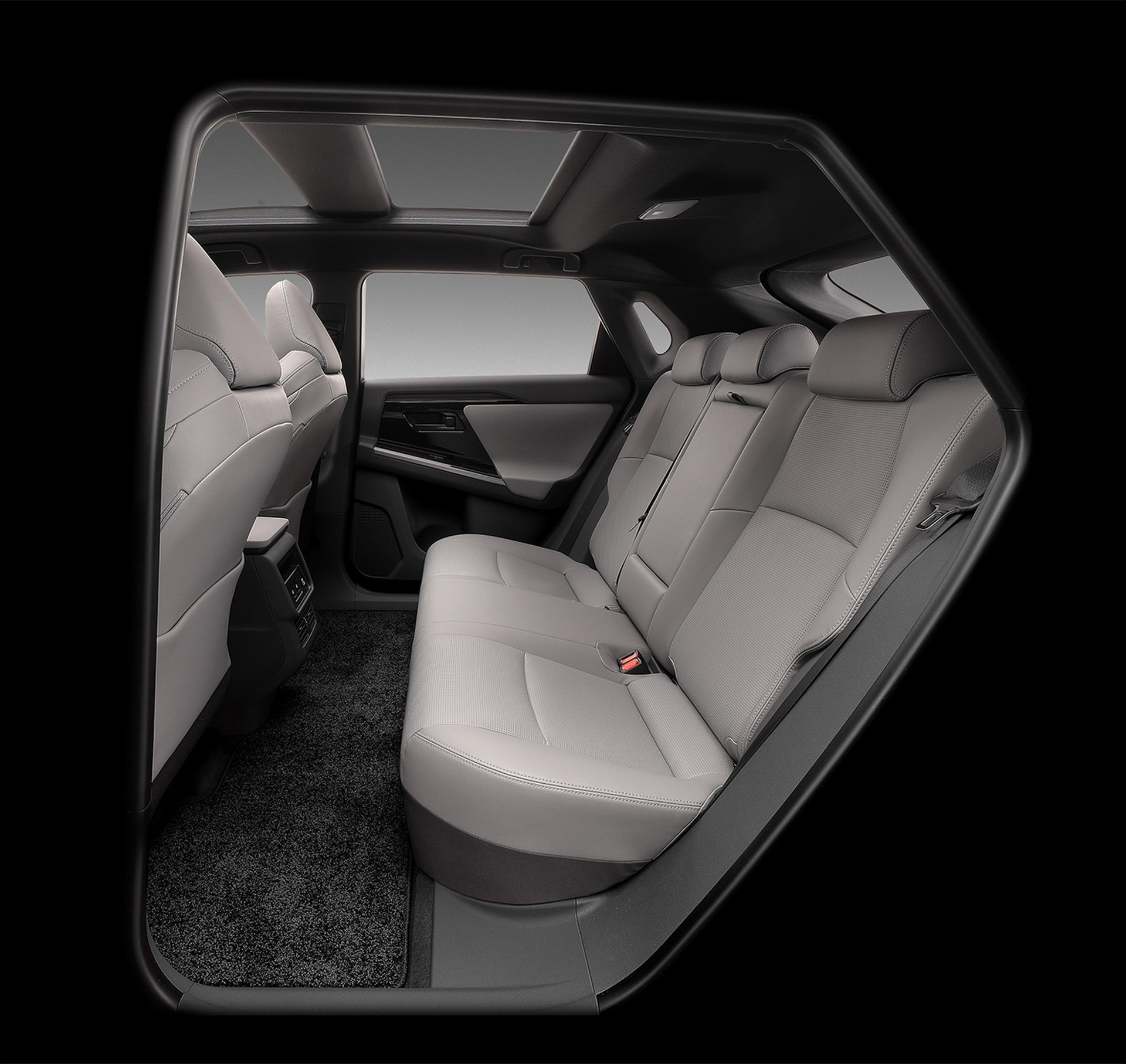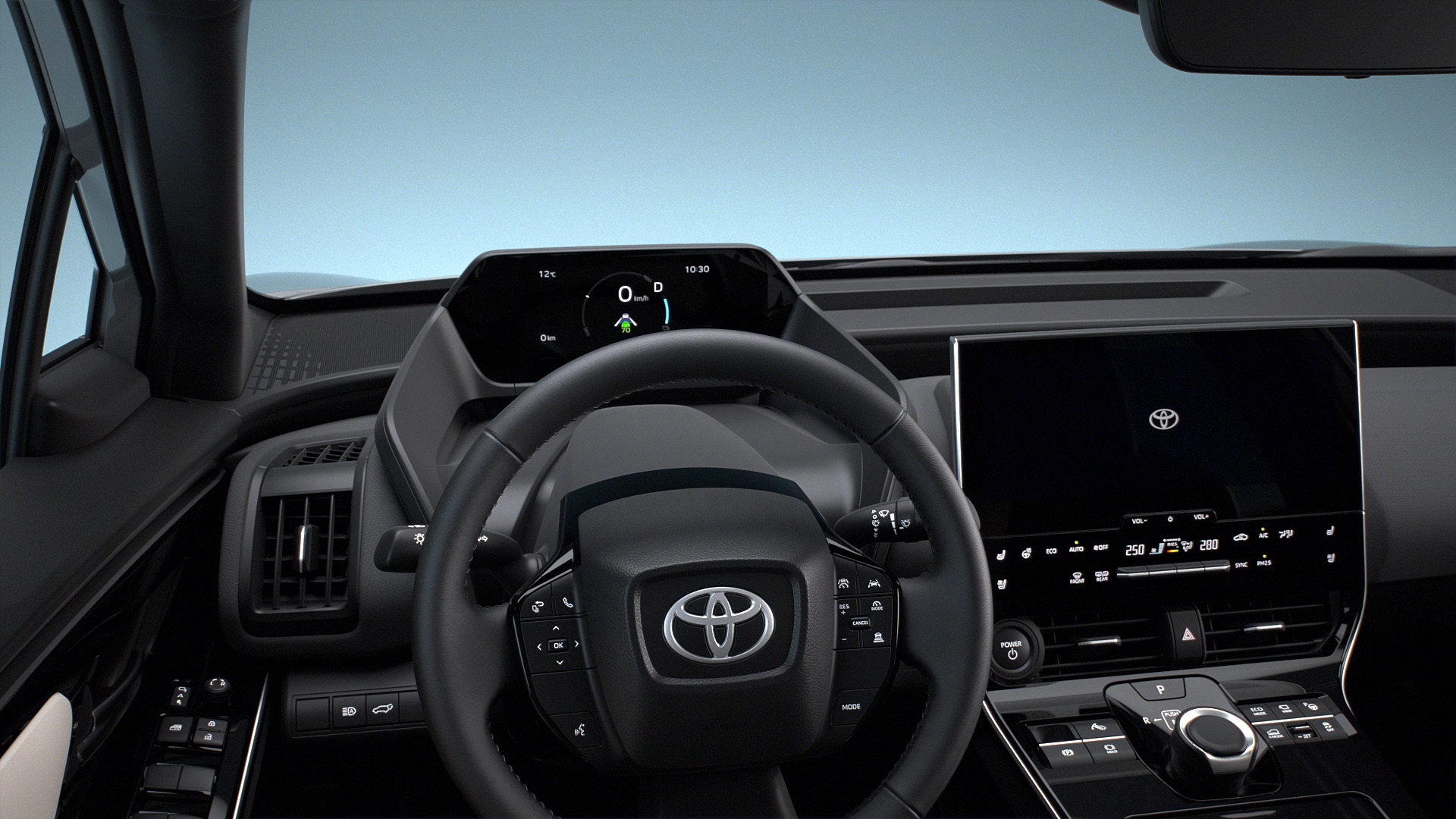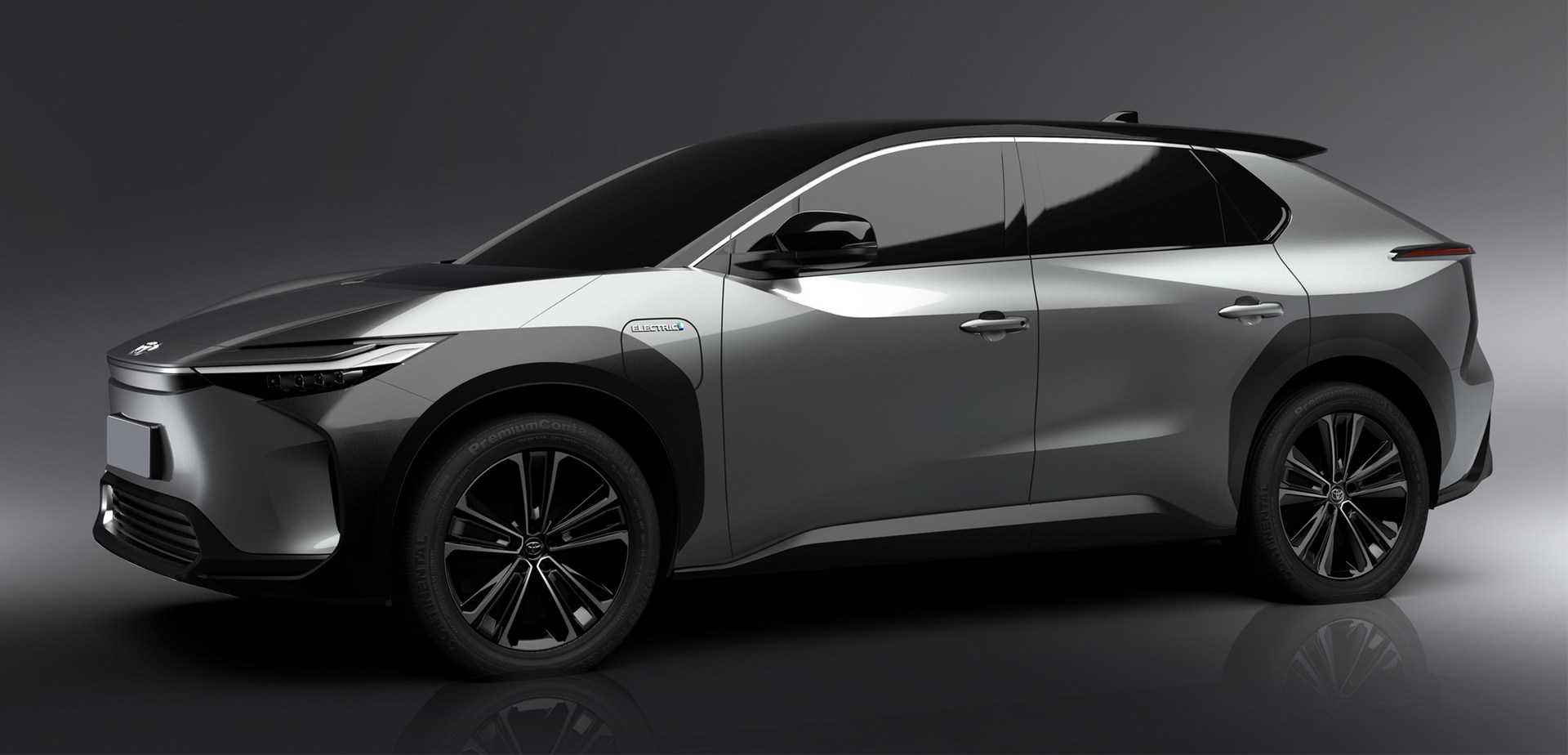Toyota and Subaru are getting ready for their first fully electric crossovers named the bZ4X and the Solterra. While we first saw the Toyota bZ4X prototype back in April, the Japanese company hadn’t revealed much information on the specifications of the upcoming medium-segment SUV.
Now, the first of seven fully electric members of the bZ family that is expected in mid-2022, has been revealed in production form in Japan in both FWD and AWD variants based on the dedicated e-TNGA scalable architecture.
The bZ4X shown in the pictures retains the hammerhead shark-inspired design of the concept car which already looked production-ready. Thus, we should focus on the specifications and the technical stuff that Toyota has revealed for the final production model.
Available In FWD And AWD Versions
The 355-Volt lithium-ion battery has a capacity of 71.4 kWh. It is located under the floor and is temperature-controlled for efficiency. The WLTP range is approximately 500 km (311 miles) for the FWD variant and 460 km (286 miles) for the heavier AWD variant. The battery supports up to 6.6 kW AC charging and up to 150 kW DC charging that is capable of an 80 percent charge in 30 minutes.
Toyota claims the battery capacity will still be at 90 percent of the original after 10 years of use or 240,000 km (150,000 miles). At the same time, a “high degree of battery cell safety” including redundant monitoring of battery voltage, current, and temperature, the elimination of contamination plus a high-resistance coolant, will ensure “protective performance” in a collision.
Two Engine Options With 201-hp And 215-hp
In terms of power, the FWD variant has a single front-mounted electric motor producing 201 hp (150 kW / 204 PS) which is directed to the front wheels allowing a 0-100 km/h (0-62 mph) acceleration in 8.4 seconds.
The AWD variant gets a twin-motor setup – one on each axle – producing 107 hp (80 kW / 109 PS) each, for a combined output of 215 hp (160 kW / 218 PS). Despite being 85 kg (187 pounds) heavier at 2,005 kg (4,420 pounds), the AWD accelerates from 0-100 km/h (0-62 mph) in 7.7 seconds thanks to the extra power and the improved traction. It is also the first Toyota to adopt Subaru’s AWD technology with X-Mode and Grip-Control.
See Also: New Toyota bZ4X Concept Arrives In America To Preview All-Electric Compact SUV For 2022
The e-TNGA platform which is Toyota’s first BEV-dedicated architecture jointly developed with Subaru, brings a low center of gravity and greater rigidity. Toyota claims they pursued “off-road performance required for SUVs” but also a car-like driving experience thanks to improved steering feel (despite the steer-by-wire system) and chassis setup. The suspension consists of strut-type coil springs at the front and double wishbone-type coil springs at the rear.
The bZ4X measures 4,690 mm (184.6 inches) in length, 1,860 mm (73.2 inches) in width, and 1,650 mm (64.9 inches) in height with a wheelbase of 2,850 mm (112.2). This makes it slightly longer than the RAV4 with a wheelbase identical to the Highlander.
Thanks to the packaging of the BEV-dedicated architecture and the long wheelbase, the five-seater cabin promises to be spacious with an interior length of 1,940 mm (76.4 inches) and interior width of 1,515 mm (59.6 inches), and an interior height of 1,160 mm (45.7 inches). Toyota claims class-leading legroom for both rows of seats in the medium segment SUVs, and a 1,000 mm (39.4 inches) tandem distance that is equivalent to a D-Segment sedan.
The dashboard is characterized by a digital instrument panel positioned close to the windscreen and a large central touchscreen that incorporates Toyota’s latest infotainment system capable of OTA software updates with cloud navigation, and enhanced voice recognition. Toyota put emphasis on soundproofing with special glass and wind-noise reduction for a quiet ride.
Solar Roof Generates Electricity For Up To 1,118 Miles A Year
There is an optional panoramic roof shedding more light into the cabin but our vote goes to the optional roof-mounted solar panel that can generate electricity for up to 1,800 km (1,118 miles) of driving range per year. The air-conditioning, heated seats, heated steering, and front-seat radiant foot-heating are designed for maximum efficiency using energy from the heat pump.
Another cool feature is the DC external power supply function that will be available in Japan, making the car an energy source for homes during power outages, or for any type of appliance during outdoor activities.
Read Also: Toyota Keeping Its Options Open, Won’t Commit To An EV-Only Future
As you would expect, the car will get the latest Toyota Safety Sense suite of ADAS, including systems like the Toyota Advanced Park system. The hardware is also enhanced with a wider detection range by the millimeter-wave radar and monocular camera.
Worldwide Launch In Mid-2022
The Toyota bZ4X will be launched worldwide in the middle of 2022, followed by three more fully electric models that were teased in the official video. By 2025, the bZ family will include seven members. Toyota is aiming for carbon neutrality by 2050, a goal that will be supported by a range of HEVs, PHEVs, BEVs, and FCEVs in the coming years.




